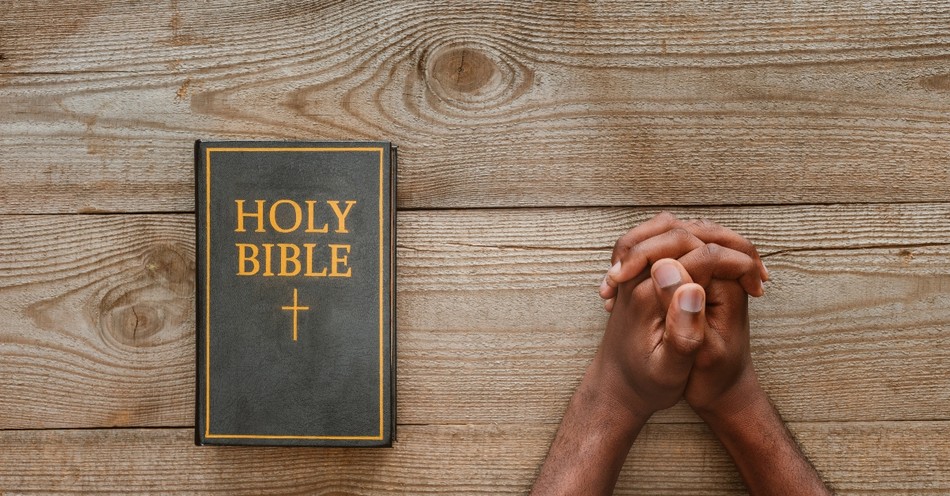The Bible frequently uses a technique called anthropomorphism, which “represents an understanding of God using human descriptors.” God does not have literal hands, and yet his hands are mentioned often. What is the significance of God’s hands?
Verses Featuring God’s Hands
“Behold, I have engraved you on the palms of my hands; your walls are continually before me” (Isaiah 49:16).
“Fear not, for I am with you; be not dismayed, for I am your God; I will strengthen you, I will help you, I will uphold you with my righteous right hand” (Isaiah 41:10).
“My hand laid the foundation of the earth, and my right hand spread out the heavens; when I call to them, they stand forth together” (Isaiah 48:13).
You have a mighty arm; strong is your hand, high your right hand (Psalm 89:13).
“From now on the Son of Man shall be seated at the right hand of the power of God” (Luke 22:69).
Psalm 8:3 even declares the glory of “the work of your fingers.”
Three Themes for Hands
There is a great deal to say about this subject, but we will focus here on just three points. The image of God’s hands symbolizes:
1. The permanence of God’s plans.
2. The presence of Christ with God.
3. God’s power made manifest through Christ.
1. The Permanence of God’s Plans
Strong’s concordance tells us that “chaqaq” is the word translated as “engraved” in the ESV translation of Isaiah 49:16. This means “to cut in, inscribe, decree.”
John MacArthur described “8 Characteristics of the Decree of God.” Three features that highlight their permanence are the unconditional, eternal, and immutable nature of those decrees.
Charles Spurgeon spoke of the “divine memorial” in Isaiah 49:16, a memorial by which God says to his people “I shall not forget you. I constantly recollect you. Your name, your business, and your circumstances are at my fingertips.”
By saying that his people are etched on his hands, the Lord also highlights the immediacy of that memorial.
Consider two methods of marking the human body: Tattooing or cutting one’s body. “You shall not make any cuts on your body for the dead or tattoo yourselves: I am the Lord” (Leviticus 19:28).
A tattoo or marks made by deliberate cutting were declarations of identity and priorities. The pagans cut themselves in a blood-letting ritual designed to manipulate their gods into action. Masters often tattooed their slaves to denote ownership.
God did not want his people marking themselves the way foreigners did by slashing their skin to honor other gods. He also disliked tattoos referencing one’s dead relatives because these were pledges to honor someone other than God.
The Lord wanted his people to honor only him by rending their hearts (Joel 2:13), not their skin. By this mark on their hearts, they identified God as their Lord, not a slave master.
Even as his people predictably fell short of his glory, God’s promise never to forget his people or to break his covenant was permanent and, as MacArthur points out, is “not based on outside influence.” Nothing we did — and nothing we do now — will cause him to break it.
2. The Presence of Christ with God
The reference to marks on God’s hands serves as a bridge between the old covenant and the covenant of Jesus’ blood, given for all who submit to him.
Going back to Isaiah 49:16, Spurgeon compares those engravings with the marks of crucifixion, a memorial Jesus sees eternally because “it is on Himself He bears the memory — the permanent memory of all whom He has bought with blood.”
Christ is with God, he is with us, and those marks ensure that we “are not overlooked” by Jesus.
Multiple Old and New Testament verses point to Christ being seated at the right hand of God. Colossians 3:1 for example would have reminded the Jewish reader of Isaiah 41:10.
Paul wrote, “If then you have been raised with Christ, seek the things that are above, where Christ is, seated at the right hand of God.” Whenever we see the “right hand of God” the Christian immediately thinks of Christ.
Isaiah 48:13 depicts him as One with God, Creator: God laid the foundations of the earth, but “my right hand spread out the heavens.” Exodus 15:6, Psalm 110:1, and Psalm 16:11 foreshadow the coming of Christ.
New Testament examples of Christ seated at the right hand of God include Romans 8:34, Hebrew 1:3, 1 Peter 3:22, and Acts 7:55.
3. God’s Hand of Power
“The Lord says to my Lord: ‘Sit at my right hand, until I make your enemies your footstool'” (Psalm 110:1). 1 Peter 3:22 describes Jesus as he “who has gone into heaven and is at the right hand of God, with angels, authorities, and powers having been subjected to him.”
The glorious might of his right hand “shatters the enemy” (Exodus 15:6). The risen Christ next to God’s mighty hand, One with the Lord in Heaven, is the ultimate picture of triumph.
For Jews demand signs and Greeks seek wisdom, but we preach Christ crucified, a stumbling block to Jews and folly to Gentiles, but to those who are called, both Jews and Greeks, Christ the power of God and the wisdom of God. For the foolishness of God is wiser than men, and the weakness of God is stronger than men (1 Corinthians 1:22-25).
He is beautiful and formidable. He has been raised into Heaven, but he will return. This is his promise to us, one which is engraved on his own hands. The immediacy of this memorial gives us confidence: We can be certain that Jesus will come back for his bride.
Submitting His Hands
As one considers the power in those hands, even symbolically, we realize how utterly shocking it is that Christ spread his arms along the cross beam and allowed soldiers to drive nails into his body; how he did not harness Creation power to obliterate his enemies but instead defeated them by submitting.
“What pleased the Jews of Paul’s day? Miraculous signs, powerful displays, shows of force,” wrote Thabiti Anyabwile. “Yet, every day and every time Christ crucified is preached, power from God is present.”
The meekness of the cross is counterintuitive given the omnipotence of God, but this is exactly right.
It is the very fact that he could have avoided the cross, which emphasizes the memorial mentioned earlier; the promise God made to his people, now driven through flesh and bone, fulfilled by hands, which rejected mere earthly power.
Romans 8:7 says, “For the mind that is set on the flesh is hostile to God, for it does not submit to God’s law; indeed, it cannot.”
By way of his death in the flesh, Jesus took our punishment so that he could be resurrected and offer us his hand in peace. “To set the mind on the Spirit is life and peace” (Romans 8:6).
Holding Him by the Hand
Those same hands, which wield such power are also extended to us in a gesture of peace. We can trust the hands, which were capable of crushing his enemies. We can trust the hands that accepted the punishment, which we deserved.
We can’t trust ourselves, but we can trust the God who, by his hand, created us, and saved us. “Behold, he is coming with the clouds, and every eye will see him, even those who pierced him” (Revelation 1:7).
The marks Christ’s enemies made on his hands remind Jesus of his merciful promise to us and his terrible promise to shatter his enemies.
For further reading:
8 Characteristics of the Decree of God
What Does the Bible Say about Tattoos?
Christ Crucified: Power and Wisdom
The Biblical Significance of Feet
What Are the Marks of a True Believer?
2 Beautiful Reminders from Our Savior’s Nail-Scarred Hands
Photo Credit: ©iStock/Getty Images Plus/LightFieldStudios




